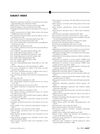Finding Models for Skin Diseases: Successes and Failures
June 2006
in “
Experimental dermatology
”
TLDR The document concludes that while finding animal models for the skin disease Hidradenitis suppurativa is challenging, certain mouse mutations may provide useful insights for research and drug testing.
The document discussed the challenges and successes in finding animal models for skin diseases, particularly focusing on hidradenitis suppurativa (HS). It highlighted that while HS is rare in humans and similar diseases are uncommon in domestic animals, certain conditions in dogs and mice might offer insights. For instance, a disease in Collies and Shelties initially thought to be HS was later identified as vesicular cutaneous lupus erythematosus. Mice generally do not develop acne, but the icthyosis mutation (Lbric) in mice, which leads to bacterial infections, could be a potential model when combined with immunodeficiencies. The paper emphasized the importance of developing or finding spontaneous or genetically engineered mouse models, citing the success in creating models for pseudoxanthoma elasticum and alopecia areata. These models have been instrumental in understanding disease mechanisms and testing drug efficacy, providing a roadmap for similar efforts in HS research.


